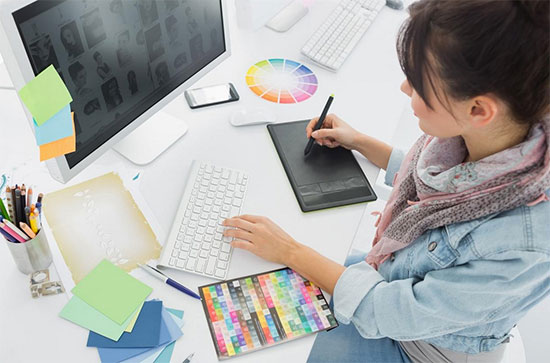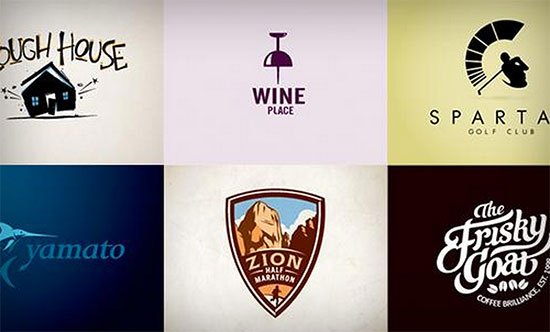

World-renowned companies are recognizable at a glance. You know it’s Mac when you see that apple. When you see that simple swoosh, you know it’s Nike. Aside from their built reputation, the logos are recognizable for a reason.

Only the best designers can convey the company’s history and the direction of its activities, as well as connect to the right audience by using a small logo – the fastest market communication instrument.
Choose a type of logo.
There are three types of logos. Typographic logos, illustrative logos, and symbolic logos. They can be a word mark (eBay, CNN, IBM, Kleenex, Google, Saks Fifth Avenue), letter from (Uber, Beats, Unilever, McDonald’s, Honda), pictorial (Playboy, Twitter, Starbucks), or abstract like Nike’s logo.
Think about the type of logo that will best suit your company
At first, we should note that the worst idea is copying the style of a famous brand; it’s never a good idea to plagiarize.
Here are some general rules:
If your company has a short name (e.g. like eBay), then a word mark or a letter logo is a good option. They both help to remember your brand better than abstract logos.
By choosing an abstract logo, make sure it reflects the concept of your brand.
Define what your logo should convey
You don’t want to remain unnoticed in the market, do you? Identify your brand’s advantages over competitors and try to express them in your logo. What people should feel, looking at your logo, is your personality and different point of view. You MUST stand out from other players in the market! Take Amazon’s logo as an example of a well-embodied brand identity.
Choose logo colors
The primary rule you can stick to is to avoid using the colors of your competitors. Also, you should consider the impact of a particular color on human psychology (e.g. red calls to action, activity, energy boosting; yellow associates with happiness and freshness, so it’s probably an excellent choice for medical and health companies; blue evokes reliability, peace, and confidence).
Fonts
It’s similar to choosing colors. By applying the right font, you can inspire and convey emotions. For example, if you’re going to start a candy shop, a smart choice is whimsical font indicating fun, sweetness, and youth; a legal firm should probably have a logo with a font representing strength, honorability, and justice.
Consider entrusting the logo to professionals
Even being a Picasso is not enough for the simple reason that drawing skills, regardless of how good they are, is not enough to make something more than just a beautiful logo.
What about your concept, consideration of the audience’s interests, upcoming trends? All these will be provided by a true professional and nobody else. Upscale designers know how to function and scale the logo across marketing and media channels, as well as on your personal site.
Anyway, don’t refuse to discuss shapes, fonts, and colors you adore with the designer. Specify your preferences at the beginning, before any work is done.
Decide on a budget and choose a designer
You should have at least a rough budget in mind before choosing someone you can entrust with the development of it. There are three approaches:
Use the services of a design company if you have the budget for it. It may cost you anywhere from $1000 to $4000 but could result in a highly personal and satisfying result.
Using a crowdsourcing platform like www.designcontest.c for logo design allows you to get plenty of possible solutions.
Hiring a freelancer is a cost-effective option, however, you can’t be sure about the quality of the work performed. Don’t use the “free” services and don’t consider rate as the only criteria. It’s best to choose a designer that is familiar with your field. Take the time to review their portfolio.
Avoid typical mistakes
As already mentioned, it is paramount to position your brand as a special one, favorably differing from all others. If it ends up similar to some of your competitors’ one, then you may promote both, as customers might not be able to tell them apart.
Think long-term
With time, your logo may need to be updated. Given this, you should provide some potential for touching up in future.
Author Bio:
Brian Jens is a professional designer, writer, and freelancer, currently working on DesignContest. He is fond of all modern stuff like new inventions, trends of graphic design and the global tendencies that rule the world.


